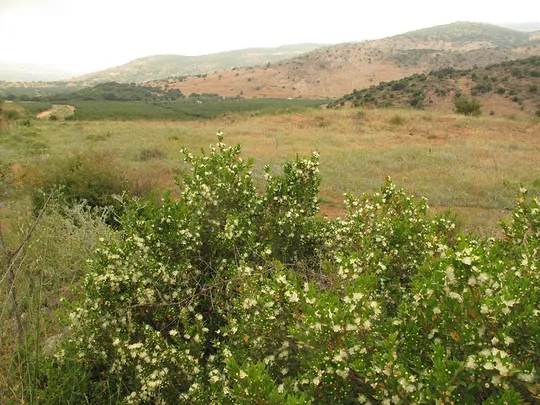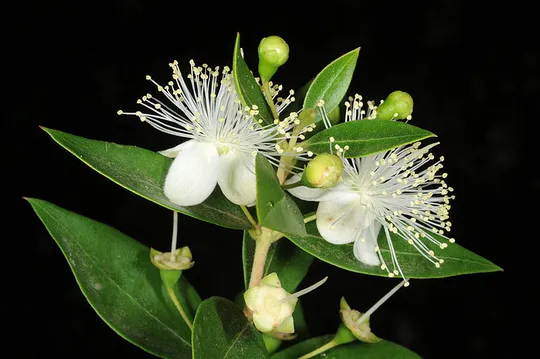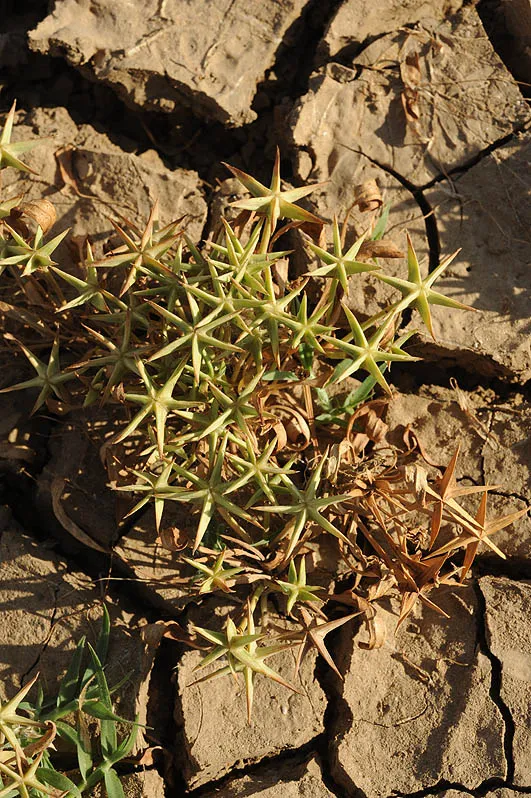Common Myrtle, True Myrtle
Myrtus communis



Myrtus communis is one of the four species related to the Jewish festival of Sukkot
(Feast of the
Tabernacles). It is used in fragrances and is
an important medicinal plant. The oil produced from M. communis is
used for washing babies, for treating
burns and for alleviating stomach pains. It is believed that an infusion of M. communis
leaves heals eye infections, serves as an external
antiseptic, is good for asthma and strengthens the hair roots. Cultured varieties are
common in
gardens, and the plant is used for wild plant gardening in open areas.
The
wild variety of Myrtus communis is rare and grows in only five regions – Upper Galilee,
Lower Galilee, Carmel, Hula Valley and Golan Heights. In the Carmel, it grows in the
Ramat HaNadiv area, and in a number of scattered
locations from Isfia up to the outskirts of Haifa. The Carmel is the southernmost point of its global distribution. In the Lower Galilee, it grows only
in the Amud Stream. In the Upper Galilee, it grows on the Mount
Meron and Mount Cnaan block. A single
site was recorded in Wadi HaShomer near Kfar Gil'adi. This population is geographically related to the dense population in the Tel Dan Nature
Reserve (Hula Valley). Rare individuals grow on Mount Hermon on the slopes
descending from the Nimrod Fortress to En Qiniye and the
Sa'ar Stream. In the Golan, many plants grow on the slopes descending to the Hula Valley and the Bet Tsayda
Valley, particularly in the the Yehudiya - Zavitan
- Gilbon streams section.
In Israel Myrtus communis grows
in two different habitat types: one on the slopes of the
relatively arid Mediterranean zone in
the Eastern Galilee, in the southern Carmel and on the Golan Heights; the other is on riverbanks
in northern Israel. In other parts of its global range, particularly in Turkey, M. communis grows as a
sub-forest in rainy Mediterranean habitats. According to the
literature, M. communis is sensitive to low
temperatures, and therefore is most common along the eastern Mediterranean coast and along the Black Sea. However,
this characterization of M. communis does not explain its distribution in the eastern Upper Galilee
and on the slopes
of Mount Hermon, which has led some people to believe that the species is feral
in these areas. Nevertheless, its distribution in the dry and mountainous regions of Iran and Pakistan supports
the view
that this is a case of natural
relictual distribution in two ecosystems with different climates.
Myrtus communis is the only
representative of the Myrtaceae family in the Mediterranean
region. This
is a large tropical family (3,000 species), whose center of distribution is in
Australia. M. communis represents an ancient arid
Paleotropic element, which survived in the Mediterranean Basin since the Miocene.
·
Myrtus
communis shrubs are burned prior
to the holiday of Sukkot and consequently sprout new
branches with whorls
of three leaves, which are in demand in the religious Jewish market. Some people believe that
this is the main reason for
the decrease of M. communis in Israel.
·
There
are 49 sites
in which M. communis
grows that have been recorded in northern Israel. There is no information whether the number of sites has
decreased since the state was established.
·
Most sites
are located outside nature reserves and cutting and picking of the
branches occurs before Sukkot.
Cutting branches
and burning of Myrtus communis on natural sites before Sukkot
should be forbidden. Action should be taken to prevent hybridization with cultured strains, and to ensure that the plants used for gardening are only from natural origins in Israel.
Myrtus
communis is found mainly in the Mediterranean countries, penetrating
east to Iran and Pakistan.
Myrtus communis
is the only natural
representative of the Myrtaceae in Israel, and represents the remnants of the Paleo-Mediterranean tropical plants that were
dominant in the Miocene. Therefore, it has a great biogeographic importance.
It is also a peripheral species,
which grows only in northern Israel and is protected by law. The species is threatened by traditional
picking for the Sukkot festival.
פז,ע.1998. הרואה הדס בחלום. הדס והאמונות סביבו, טבע וארץ 31: 14-17.
Current Occupancy Map
| 1000 squre meter pixel | 5000 squre meter pixel | 10000 squre meter pixel | |
|---|---|---|---|
| number of observations | 0 | 0 | 0 |
| in total pixels | 0 | 0 | 0 |
| Family | Myrtaceae |
| Classification | On the endangered species list |
| Ecosystem | Mediterranean |
| Chorotype | Mediterranean (Western – Irano – Turanian) |
| Conservation Site | Mount Akbera above En Hadas |
| Rarity |
1
1
6
|
|---|---|
| Vulnerability |
0
2
4
|
| Attractiveness |
0
4
4
|
| Endemism |
0
0
4
|
| Red number |
1
4.2
10
|
| Peripherality | N |
| IUCN category | DD EW EX LC CR EN VU NT |
| Threat Definition according to the red book | Endangered |
 Based on:
Based on:






